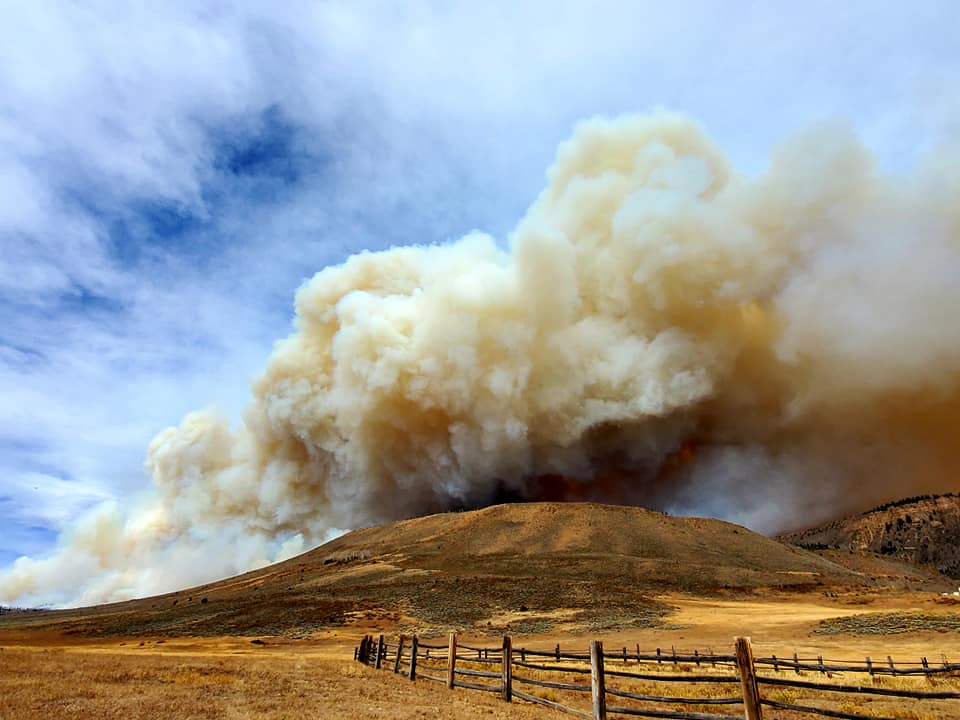Opinion | Writers on the Range: When reality weighs you down
Writers on the Range

U.S. Forest Service/Courtesy photo
A lot of us feel hopeless today. There’s the return of energy dominance as a federal goal, which places oil, gas and coal extraction above all other uses.
There’s the extinction crisis affecting animals and plants that’s 1,000 to 10,000 times the regular rate of extinction. Then there’s the erosion of soil, as half of the planet’s topsoil has been lost in the past 150 years.
Water pollution has increased because about 80% of untreated wastewaters worldwide get discharged into waterways that supply communities.
Worse is the elephant in the room—climate change—causing ever more major floods, violent hurricanes and extreme wildfires. Last year was also the first year the world exceeded the climate threshold of 1.5 degrees Celsius above pre-industrial levels, at which climate impacts are expected to significantly increase.
These are just the headlines. It seems so grim today on Planet Earth that archaeologists, biologists and other ologists want to name this epoch the “Anthropocene”
for our human-dominated, hopeless present.
Is there an alternative to this gloom and doom? To function, I think there has to be, and much of that certainty comes out of a freshman course I teach called Environmental Conservation at Colorado State University in Fort Collins.
A hundred or more students enroll each semester, representing majors from pre-business to interior design, and the students are just three months out of high school when they arrive in the fall. The world they’ve begun studying seems anything but stable.
At the beginning of the semester, I ask them if their generation can “save the world.” There are always optimists who say “yes,” though in recent years fewer and fewer hands reach for the ceiling.
Over the course of the semester, we discuss the losses on the land and to wildlife, as well as the impacts of human population growth, the starkly different levels of per-capita global consumption, and the unintended consequences of technology.
We also gain familiarity with our local and regional watershed. We do that by participating in “ecological restoration” workdays, going to work on ranches with conservation easements. There the young students use their hands and tools to protect water sources, build wildlife-friendly crossings, and slow soil erosion by filling in gullies, among other solutions.
Watershed-based experiences like this can cut through the murky esoteric to the pragmatic: There are ways to live on our home planet without spoiling it. The best part is seeing students shifting away from a sense of despair.
Colorado has over 150 collaborative conservation groups— collaborativeconservation.org—that bring people together where they live, work, recreate and worship. Their aim is to improve the health of soil, water, plants and wildlife. This movement has grown West-wide, spanning 11 states.
The antidote to our planet’s illnesses also has global reach. Paul Hawken, in his book, The Blessed Unrest, describes the more than one million bottom-up groups around the globe working toward environmental sustainability and social justice. Unlike traditional movements, this network is decentralized, collaborative, diverse and not driven by a single ideology or leader.
This good news applies to climate change as well, even though the U.S. has, for the second time, removed the United States from the Paris Climate Accord. That leaves our country in the company of Yemen, Libya and Iran.
But people concerned about global warming reacted by going public and objecting. More than 3,800 leaders from America’s city halls, state houses, boardrooms and college campuses have signed the “We Are Still In” declaration (https://www.wearestillin.com/we-are-still-declaration). Signers represent more than 155 million Americans and $9 trillion of the U.S. economy.
My gut tells me that many of us refuse to give in to hopelessness. But can young people, inheriting our mistakes and the determination of some to deny there’s even a crisis, “save the world”? That’s a gigantic ask.
But can they make the watershed where they live better? If the state of one watershed after another improves, might the Earth over time become healthier, one watershed at a time? All we can do where we live is to get involved in conservation locally, regionally or nationally, joining a group or starting our own.
We can also contact our elected representatives to protest this administration’s intent to maximize extractive uses on public lands.
Let’s choose hope, get our hands dirty, and make our optimism real.

Richard Knight is a contributor to Writers on the Range, WritersOnTheRange.org, an independent nonprofit dedicated to spurring lively conversation about the West. He works at the intersection of land use and land health in the American West.

Support Local Journalism

Support Local Journalism
As a Summit Daily News reader, you make our work possible.
Summit Daily is embarking on a multiyear project to digitize its archives going back to 1989 and make them available to the public in partnership with the Colorado Historic Newspapers Collection. The full project is expected to cost about $165,000. All donations made in 2023 will go directly toward this project.
Every contribution, no matter the size, will make a difference.







